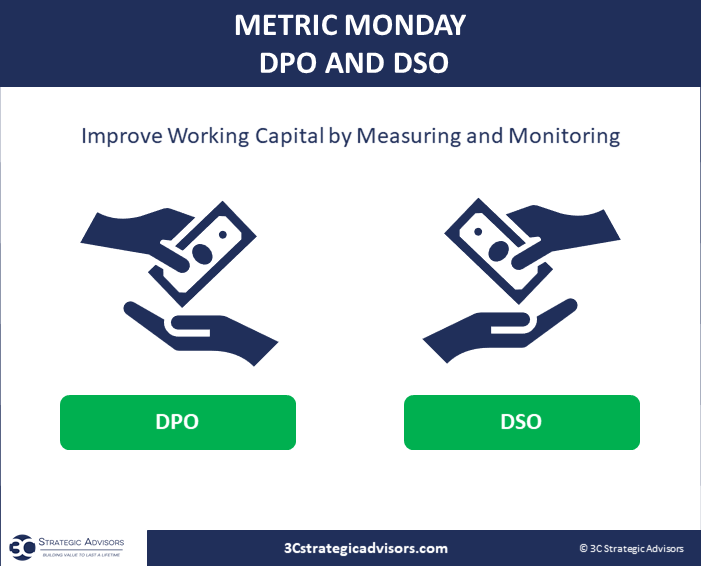
Every Monday we publish education on key business metrics you can use to operate and scale your company. This week we cover two measures to help manage cashflow: Days Payable Outstanding (DPO) and Days Sales Outstanding (DSO).
DAYS PAYABLE OUTSTANDING (DPO)
DPO is a measure of cash outflow or how efficiently your company is managing its accounts payable. Targeting a higher DPO is important to making sure your business is holding on to cash for as long as possible. The longer you can hold on to cash, the more time you have to put that money to work in your business or earn interest on it.
With that said, DPO must still be kept within a reasonable threshold. Stretching your payables to their due date is reasonable but be careful not to upset vendors or incur late charges by consistently paying late.
Calculating Days Payable Outstanding:
Divide average accounts payable for a period of time (month, quarter, year) by the daily cost of goods sold (aka cost of sales) for the same time period.
-
- Q1 Average Accounts Payable Balance: $350,000
- Q1 Cost of Sales: $900,000
- DPO: ($350,000 / ($900,000 / 90 days)) = 35 days
A DPO of 35 means payables remain outstanding for an average of 35 days.
DAYS SALES OUTSTANDING (DSO)
DSO is a measure of cash inflow or how efficiently your company is managing its accounts receivable. Targeting the lowest possible DSO is important to making sure your business is collecting cash quickly.
Calculating Days Sales Outstanding:
Divide average accounts receivable for a period of time (month, quarter, year) by the daily sales (revenue) for the same time period.
-
- Q1 Average Accounts Receivable Balance: $450,000
- Q1 Sales (Revenue): $900,000
- DSO: ($450,000 / ($900,000 / 90 days)) = 45 days
A DSO of 45 means receivables remain outstanding for an average of 45 days.
THE BOTTOM LINE
It is difficult to improve what you do not measure. Thus, the first step in any business strategy is to determine the important metrics to achieve your goals and measure them. Regularly monitoring your DPO and DSO will help you improve your cash conversion cycle and working capital.
Appropriate DPO and DSO targets may differ by industry, so an isolated number is limited in its ability to help guide your decision-making. Instead, track these metrics over time so that changes in trends can help you take corrective action as early as possible. In doing so, you will have a more efficient organization and increased working capital to operate and grow your business.
If you would like to learn more about other key metrics to help in your decision making or could use a partner to build a custom KPI Dashboard for your organization, contact us for a free strategy call.

